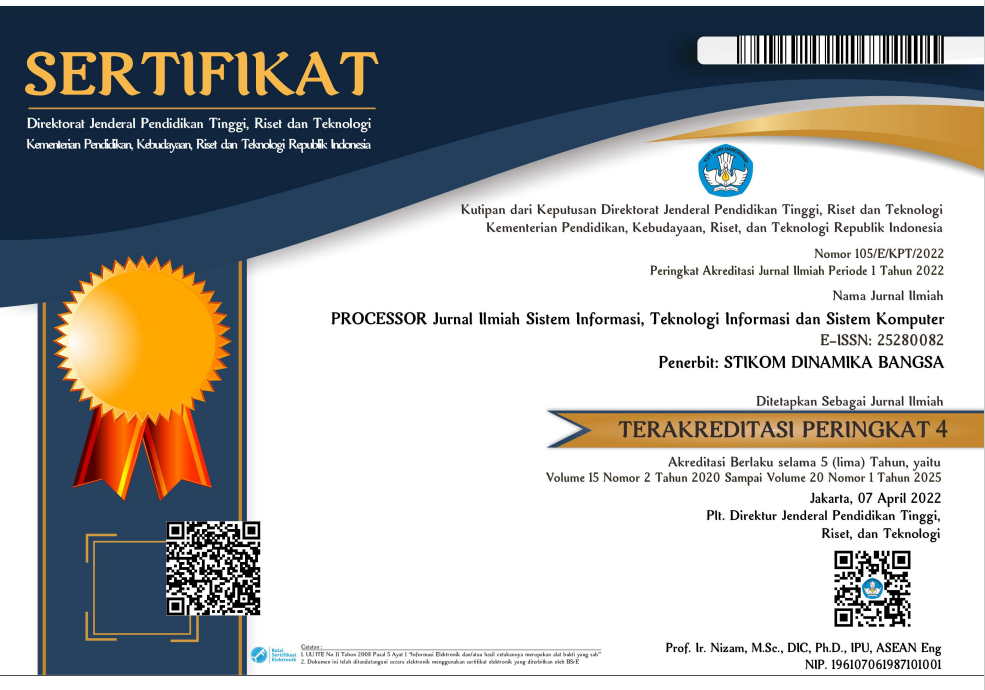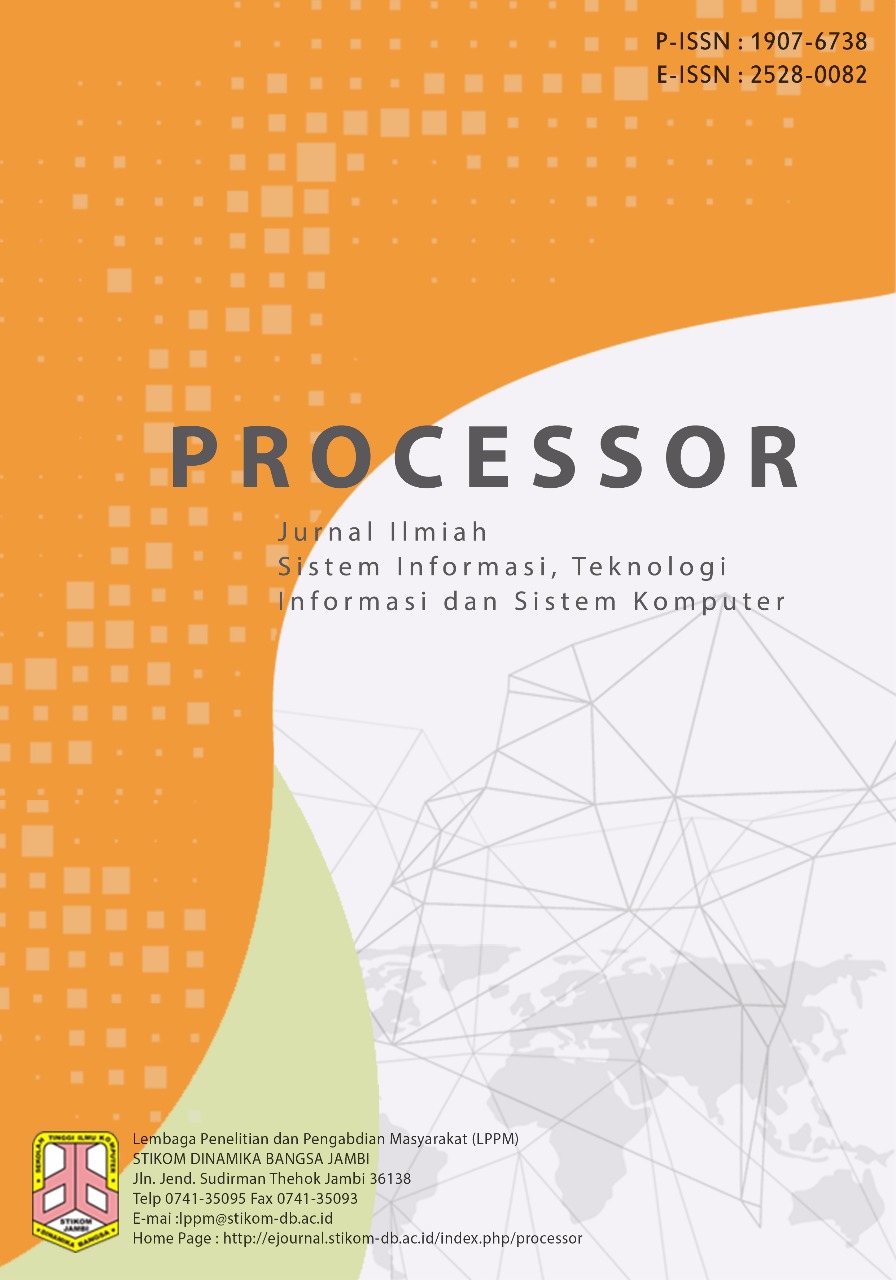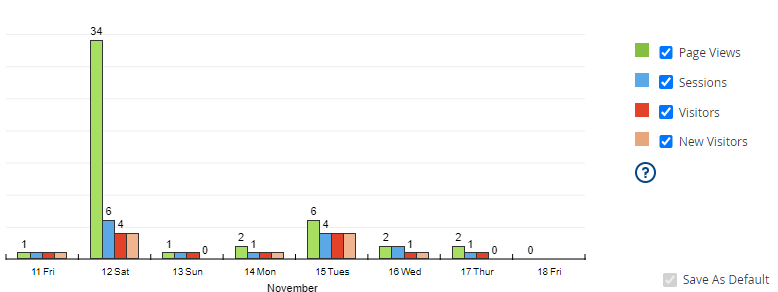PERANCANGAN SISTEM NAVIGASI ROBOT SEPAKBOLA BERODA DENGAN MENGGUNAKAN METODE GREEDY
DOI:
https://doi.org/10.33998/processor.2021.16.1.945Keywords:
Robotik, robot beroda, algoritma greedy, KRSBIAbstract
Development in the world of robotics at this time is growing where robots can be useful in every human activity, the role of robots at this time can
already help in human work. In Indonesia, robot contests have been held every year at both regional and national levels. One of the categories to be
discussed in this research is the Indonesian Football Robot Contest (KRSBI). In the indonesian football robot contest is divided into two more categories,
namely humanoid division football robot and wheel division football robot. In this category, robots must be able to navigate to find the ball and kick
towards the goal. The main objective of this robot is to navigate and search for the ball to reach the opponent's goal. However, at the time of the match
the robot has problems in the ball search system quickly, so it can slow down in taking the decision to chase the ball because the robot can not know
the distance of the ball and the robot. One solution that can help the problem in wheeled football robots is to add greedy methods to wheeled football
robots in taking the best option. So that the robot can vaccinate quickly and can chase the ball well. The test area uses a field of 180cm x 360cm. The
test is declared successful if the robot can reach the ball and avoid the obstacle. From the test results, the robot managed to reach the ball well, so it can
be concluded that the robot can navigate using the greedy algorithm























